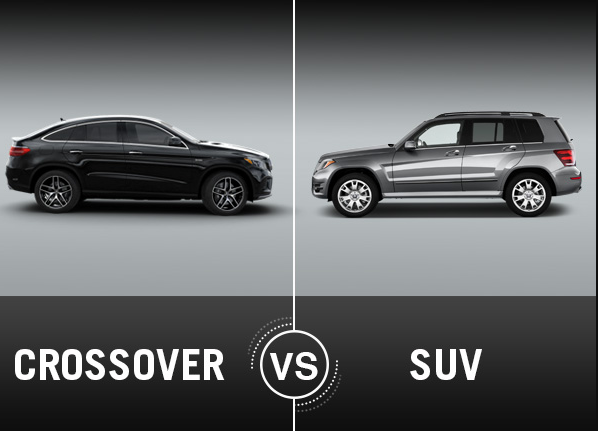When you hear the term “SUV” what do you picture? Some of us may picture a large, rectangular vehicle with up to three rows of seats — the ultimate family car. Others may picture something smaller and sleeker, perhaps with two rows of seats.
The fact of the matter is that the term SUV is often used to describe a wide range of vehicles, some of which may technically be crossovers — a word that is gaining popularity to describe a certain type of SUV.
Keep reading to learn more about the difference between SUVs and crossovers, two types of vehicles well worth considering for your next vehicle, each with its own advantages.
Key Differences Between Crossovers & SUVs
So, what makes an SUV an SUV and a crossover a crossover? It is helpful to think of SUV as the broader category, with crossovers being a more specific subsection of SUVs.
Characteristics of SUVs
Sport utility vehicles, as their name implies, tend to have capabilities that make them ideal for hauling lots of passengers and cargo — and possibly even handling tough terrain, depending on the model. They are generally considered a “light truck” as opposed to a car, according to Car and Driver.
SUVs have typically featured what’s called body-on-frame construction — the same type of platform you’d see on a truck. This construction method involves connecting a body to a distinct frame. As U.S. News & World Report Cars writes, body-on-frame construction facilitates advantages like:
- Simpler repairs
- Better off-road capabilities
- Higher towing capacity
As you’ll read in a moment, crossover vehicles are different from traditional SUVs because they feature a completely different kind of construction.
Characteristics of Crossovers
Crossovers may appear at first glance to be just smaller SUVs, but they actually are foundationally different than traditional sport utility vehicles.
Crossovers use unibody construction, where the frame and body are built together as one unit — the same type of platform you’d see on a car. The result? Crossovers are lighter weight, increasing their fuel efficiency.
The main difference between traditional SUVs and crossovers is the underlying platform. Even within the same manufacturer, you could see some models feature different kinds of constructions. The Wrangler is one Jeep SUV that still relies on body-on-frame construction due to its need for off-road performance, while the Grand Cherokee utilizes a unibody chassis because it prioritizes smooth pavement driving.
Should You Get a Crossover or an SUV?
Whether you should get an SUV with body-on-frame construction or a crossover with unibody construction really depends on your wants and needs from that vehicle.
Key questions to ask yourself include:
- How many pounds will I need to tow?
- Will I be using the vehicle for on-road, off-road, or a mix?
- Is towing/hauling capacity or fuel efficiency more of a priority?
- How many passengers do I need to carry — will I need two or three rows of seats?
Crossovers are a segment of SUVs rising in popularity because many drivers feel they deliver the best of both worlds: Good passenger and cargo capacity plus easy maneuvering and greater fuel efficiency. However, there are definitely drivers who know they need a large SUV to tow heavy objects, seat up to eight passengers, or hit the trails in a more specialized vehicle.
For the average daily driver, a crossover is likely a better fit because it’ll cost less at the pump without sacrificing too much spaciousness and capability. Only you can ultimately determine whether an SUV or a crossover SUV would be a better fit for you, though. It’s worth exploring the entire gauntlet of SUVs to find your match.

